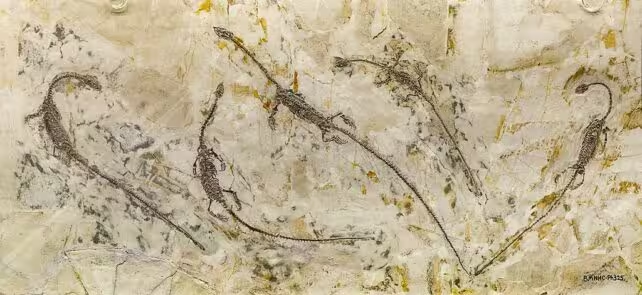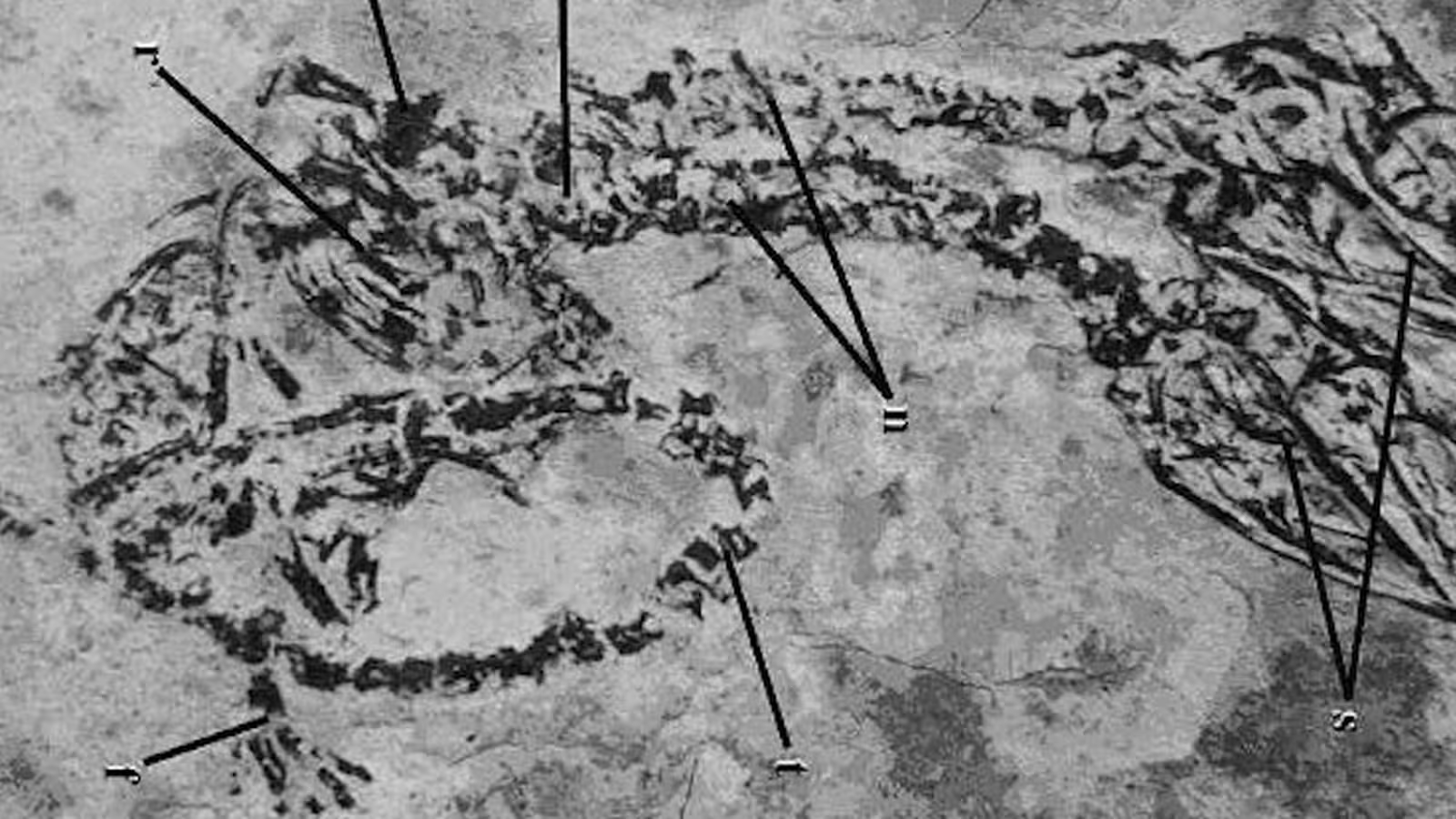4 Minutes
Discovery and description
Hyphalosaurus, a small aquatic reptile from the Early Cretaceous, is well represented in the fossil record by thousands of specimens. In 2006, paleontologists reported an exceptional Hyphalosaurus fossil that preserves two complete heads and necks emerging from a single body. The specimen measures roughly 70 millimetres in total length and appears to be an embryo or neonate rather than a fully grown animal.
The original description notes that 'starting from the level of the pectoral girdle, the vertebral column divides into two cervical series, forming two long necks that end in two skulls.' This anatomy indicates a developmental malformation in the axial skeleton rather than a postmortem break or later modification of the fossil.
Scientific context: axial bifurcation and developmental causes
What is axial bifurcation?
Axial bifurcation is a rare developmental condition in which the vertebral column partially splits, producing duplicated neck or tail structures. It can result when an embryo begins to divide during early development—similar to the initial stages of twinning—but the separation is incomplete. The outcome is a single body with replicated axial structures such as two heads or two tails.
While axial bifurcation is uncommon, modern examples exist across diverse groups: two-headed snakes, turtles, salamanders, sharks and even hoofed mammals have been documented. These modern records help paleontologists interpret ancient cases by showing how developmental biology can leave consistent skeletal signatures across geological time.
Survivorship and biological implications
Two-headed animals typically face severe survival challenges. Competing neural and sensory inputs, difficulties with feeding and locomotion, and increased vulnerability to predators make reaching adulthood unlikely. The tiny size and developmental stage of the Hyphalosaurus specimen suggest it did not survive long, consistent with observations from living two-headed individuals.

Preservation, authenticity and significance
The fossil was recovered from a region where some forgeries have been reported, prompting close taphonomic and preservational scrutiny. The describing researchers observed a fine sediment coating partially covering the bones and an intact slab with no evidence of cracks or adhesive repairs—features that support the fossil's authenticity.
From a statistical and taphonomic perspective, the specimen is remarkable. Fossilization is a rare outcome for most organisms, so the preservation of such an atypical developmental anomaly is an extraordinary stroke of luck. As the authors concluded in 2006, this two-headed Hyphalosaurus appears to be unique in the fossil record and represents the oldest documented example of axial bifurcation, extending the known deep-time occurrence of this condition to more than 120 million years ago.
Expert Insight
Dr. Laura Kim, a paleobiologist specializing in vertebrate development, commented: 'This specimen bridges modern developmental biology and deep-time paleontology. It shows that rare embryological events we observe in living animals also occurred in Mesozoic ecosystems. Each such fossil provides a direct window into ancient developmental processes and their evolutionary context.'
Conclusion
The two-headed Hyphalosaurus fossil provides compelling evidence that complex developmental malformations, like axial bifurcation, have occurred for at least 120 million years. The specimen is scientifically valuable on multiple levels: it preserves a clear anatomical signature of a developmental anomaly, it appears authentic based on preservation details, and it highlights how rare but biologically informative fossils can illuminate both past life and the continuity of developmental processes across deep time. Keywords: Hyphalosaurus, axial bifurcation, two-headed fossil, Early Cretaceous, developmental malformation, paleontology, fossil authenticity.
Source: sciencealert


Leave a Comment